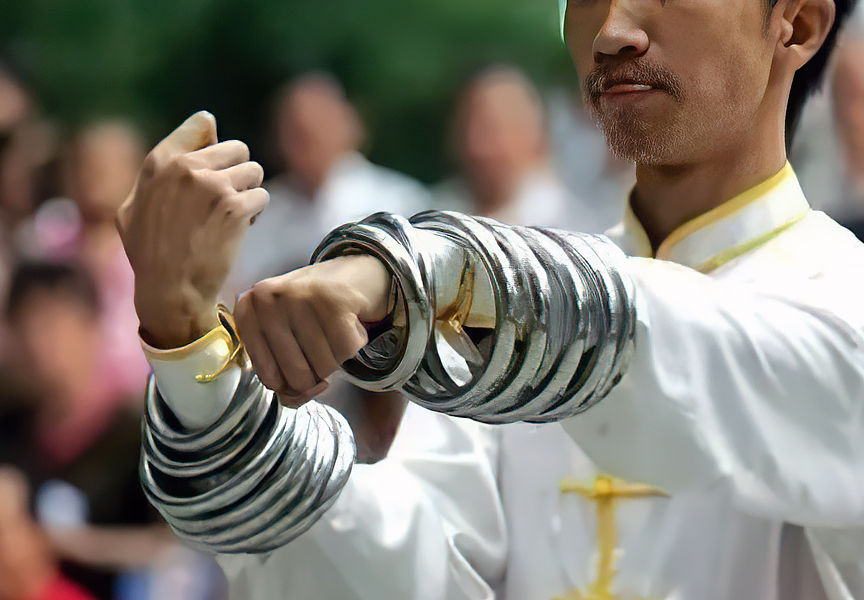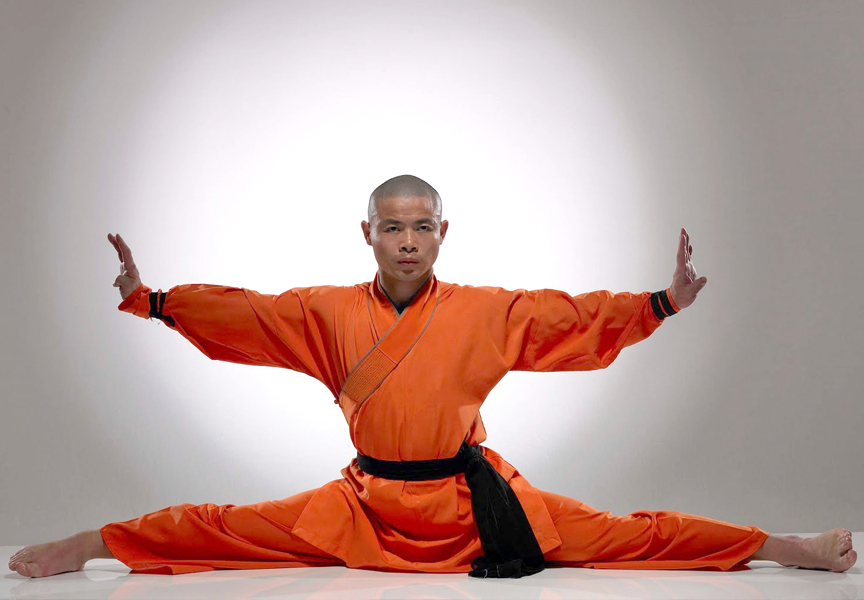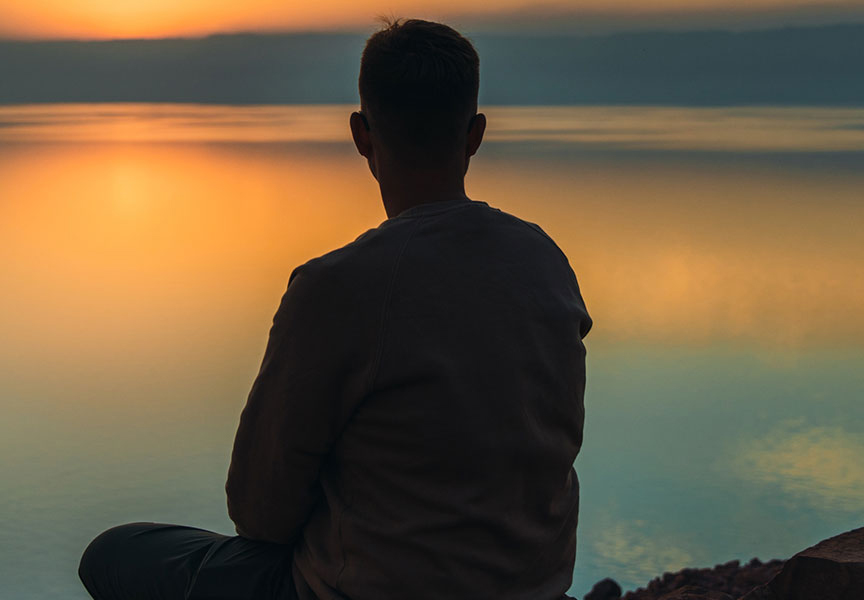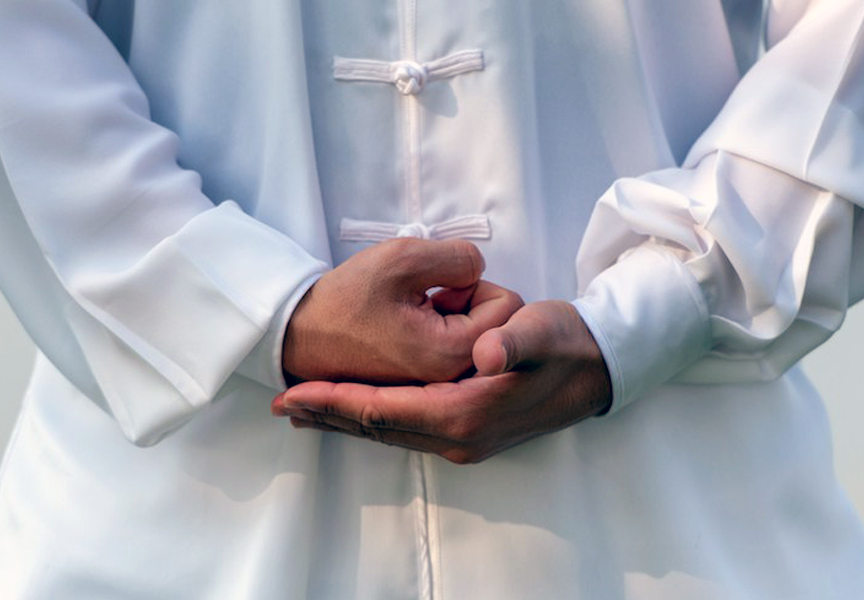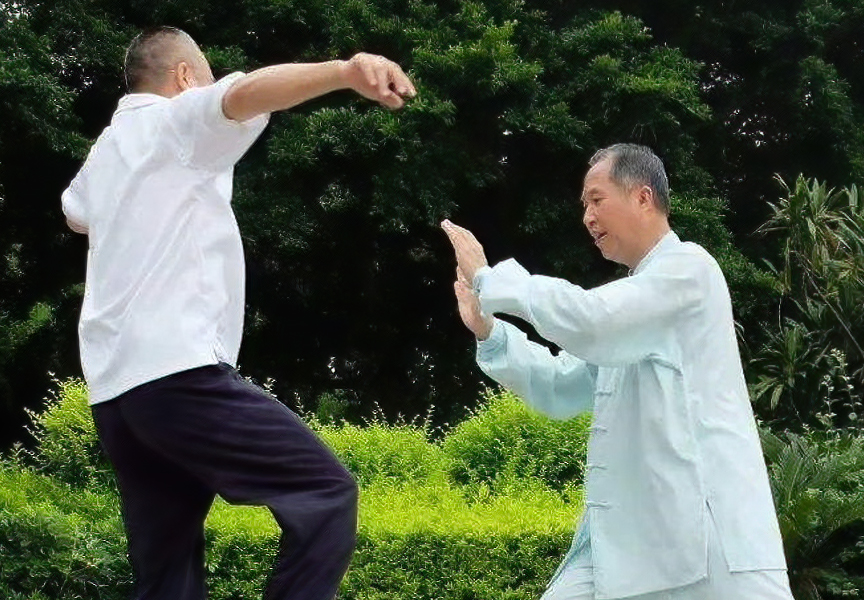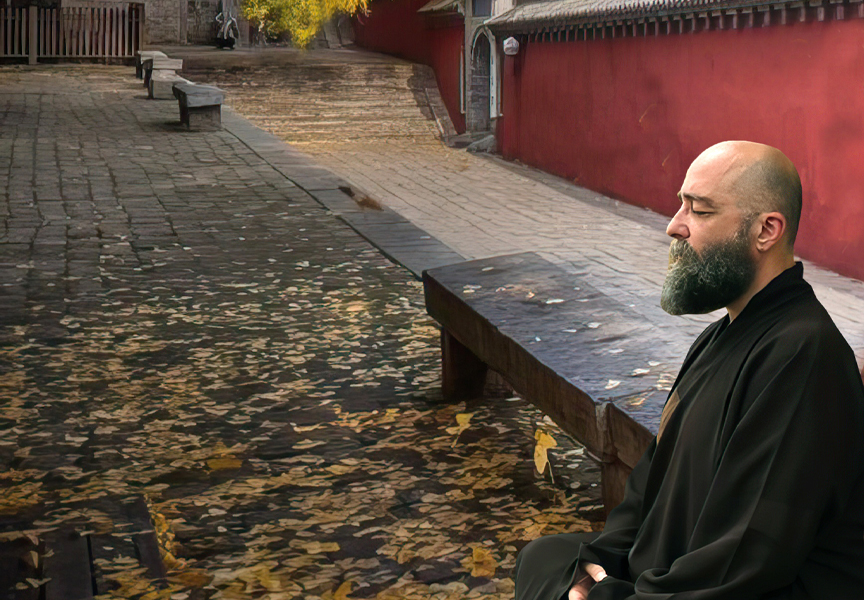After more than 40 years of practicing Shaolin Rou Quan, I feel both a deep need and a sense of obligation to share my personal point of view, my understandings, and, above all, my own experience with this remarkable art. Shaolin Rou Quan, often misunderstood or undervalued compared to other martial arts, holds profound benefits that go far beyond self-defense. It is a discipline that fosters balance, inner peace, and strength in ways that are often overlooked. Through my decades of practice, I have come to realize that Shaolin Rou Quan is not just a physical exercise but a way of life—a path that cultivates both the body and the mind. Now, I wish to share this journey with others, so they too can experience the transformative power of this ancient art.
Master Shi Yan Zhuo of Shaolin Temple
Shaolin Rou Quan [Chin.: Shàolín róu quán nèigōng 少林柔拳內功], often referred to as Shaolin Rou Gong [Chin.: Shàolín róu gōng 少林柔功] is an ancient Shaolin Martial Art that embodies the principles of balance, harmony, and fluidity. When I first began practicing Shaolin Rou Quan, I was primarily drawn by its reputation for promoting physical health and stress relief. However, over the years, I have gained much more than I initially anticipated—an evolution that has touched my body, mind, and spirit.
1. Physical Health and Well-being
At the beginning, my goals were simple: improve my flexibility and develop a gentler form of exercise that didn't stress my joints. Shaolin Rou Quan is characterized by slow, deliberate movements, making it ideal for those looking for a low-impact workout. As I immersed myself in the practice, I noticed improvements in several areas:
Flexibility and Mobility: My body gradually became more supple, and movements that once felt stiff became fluid and natural. Shaolin Rou Quan's flowing postures require a full range of motion, which gently stretches muscles and improves joint health. Over time, I became more agile, both in daily life and during my practice.
Balance and Stability: Shaolin Rou Quan emphasizes shifting weight from one leg to another while maintaining controlled, rooted postures. This helped me develop stronger core muscles and significantly improved my balance. I found myself feeling more grounded—not just physically but mentally as well.
Strength and Endurance: While Shaolin Rou Quan may seem soft, its stances and forms demand strength, particularly in the legs and core. Holding positions like the "horse stance" helped build muscular endurance. This translated into a body that felt more resilient and capable, even in other physical activities outside Shaolin Rou Quan.
2. Mental Clarity and Stress Relief
One of the greatest benefits I discovered through Shaolin Rou Quan was its ability to calm the mind. The meditative nature of the practice, with its focus on controlled breathing and mindful movement, worked wonders for my mental well-being. Over time, I experienced several key mental benefits:
Mindfulness: Shaolin Rou Quan requires complete attention to the present moment. Each movement is slow, deliberate, and coordinated with the breath, pulling the mind away from distractions. This practice of mindfulness naturally extended into my everyday life, making me more aware of my thoughts, emotions, and surroundings.
Stress Reduction: The tranquil, flowing motions of Shaolin Rou Quan have a profound calming effect on the nervous system. With regular practice, I noticed that my overall stress levels dropped. I became more equipped to handle life's challenges with grace, rather than reacting impulsively. The integration of slow, deep breathing also played a significant role in releasing tension and maintaining emotional equilibrium.
Mental Focus: Shaolin Rou Quan requires precise control of both body and mind. The need to synchronize movement with intention and breath improved my concentration. I found that practicing Shaolin Rou Quan not only sharpened my focus during sessions but also enhanced my ability to concentrate in other aspects of my life, whether it was at work or when solving problems.
3. Spiritual Growth and Inner Harmony
As I delved deeper into the philosophy behind Shaolin Rou Quan, it became more than just a physical or mental exercise—it evolved into a spiritual practice. Shaolin Rou Quan is deeply rooted in a philosophy, which emphasizes harmony with nature, balance, and flowing with the natural order of things. Through years of practice, I began to absorb these principles in subtle yet transformative ways:
Connection to the Flow of Life: Shaolin Rou Quan taught me the value of yielding rather than resisting. This idea, known as "wu wei" or effortless action, showed me that it's often better to go with the flow rather than constantly pushing against obstacles. I became more adaptable, able to adjust my approach in situations where I once felt stuck or frustrated.
Yin and Yang Balance: The concept of yin and yang—opposing yet complementary forces—became more than just a symbol. In Shaolin Rou Quan, every movement embodies the interplay between soft and hard, empty and full, stillness and motion. Through this practice, I learned to seek balance in my life. I understood that life’s challenges could be met with softness or strength, depending on what was required. This balance created a sense of internal harmony that I now carry with me every day.
Inner Peace: Perhaps the most profound transformation was a growing sense of inner peace. Shaolin Rou Quan, with its rhythmic movements and quiet meditative practice, became a sanctuary for me—a space where I could connect with myself on a deeper level. Over the years, this inner stillness has grown, helping me maintain calmness even in the face of external chaos.
4. Cultivating Patience and Perseverance
Unlike many physical practices that offer quick results, Shaolin Rou Quan is slow and methodical. It requires patience, persistence, and a willingness to commit to long-term growth. As someone who had always been results-oriented, I initially found the pace of Shaolin Rou Quan frustrating. However, this practice ultimately became one of my greatest teachers of patience.
Slow Progress, Deep Roots: Shaolin Rou Quan taught me that meaningful progress often comes slowly but deeply. Instead of expecting immediate results, I learned to appreciate gradual improvements—both physically and mentally. This shift in mindset affected other areas of my life as well, making me more patient and resilient in the face of challenges.
Mastery Through Repetition: The repetitive nature of Shaolin Rou Quan’s forms requires consistent practice. This repetition allows for deeper exploration of movements, breathing, and intention. Over time, I realized that mastery isn't about perfection, but about continuous improvement and self-refinement. Shaolin Rou Quan taught me that showing up consistently is where true growth lies.
5. A Deeper Connection to Community
One of the unexpected gifts of Shaolin Rou Quan practice was the sense of community it fostered. Whether in group classes or open-air parks, Shaolin Rou Quan often brings together people from all walks of life, united in their pursuit of health and inner balance. Through shared practice and the exchange of experiences, I found myself part of a supportive community.
Shared Learning: In my journey, I discovered that Shaolin Rou Quan is best learned not in isolation, but in the company of others. Observing fellow practitioners, exchanging feedback, and learning from seasoned teachers created an environment of mutual growth. This sense of connection extended beyond the practice itself and brought me into a circle of like-minded individuals who shared a passion for cultivating balance in both body and mind.
Conclusion: A Lifelong Journey
My journey through Shaolin Rou Quan has been deeply transformative. What began as a simple form of exercise grew into a lifelong practice that continues to shape my physical, mental, and spiritual well-being. The beauty of Shaolin Rou Quan lies in its depth; no matter how long you practice, there is always something new to learn, another layer to uncover.
As I look back on the years of Shaolin Rou Quan, I see it not just as a martial art, but as a profound life practice—a continuous flow of growth, patience, balance, and inner peace.
